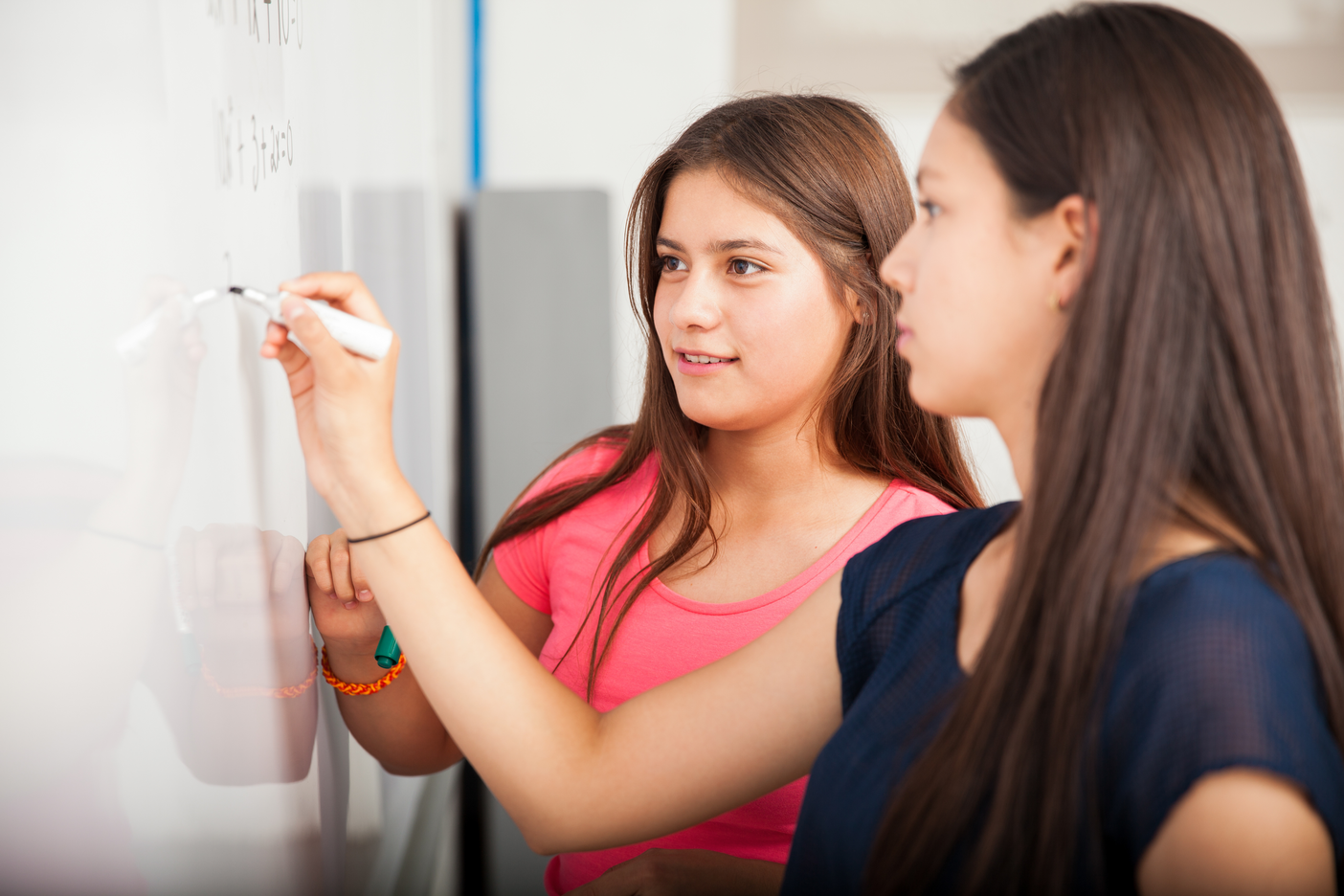How can teachers increase students' confidence and reduce anxiety in problem-solving in the computing classroom?
02 September 2021

Henna Gorsia explores gender differences in computing anxiety and discusses how interactivity can help ease performance anxiety and how coding challenges can help ease cognitive overload. The blog post also provides useful resources which can be used in the classroom to help ease computing anxiety.
How can teachers increase students' confidence and reduce anxiety in problem-solving in the computing classroom?
Students are starting a new school year having experienced 18 months of disruption. This may cause them to feel anxious about learning, and it is important to think about how to mitigate this in the computing classroom.
Anxiety can be referred to as the emotional state that affects student behaviour. This emotional state can include worry, fear, and apprehension. More specifically, computing programming anxiety is a term that can be used when students feel afraid and uneasy and this could have an impact on practical aspects of the computing curriculum, such as coding. A recent study assessed computer programming anxiety amongst first year Bachelor of Science in Information Technology students. The study looked at the relationship between academic performance and anxiety in a computer programming course. Findings showed that most students avoided programming, because it was unfamiliar to them and it made them feel anxious and uncomfortable. The study also found that those with higher academic achievement were likely to be less anxious than those with lower academic achievement. Recommendations to reduce this anxiety were for educators to create an engaging teaching and learning environment, one which would increase students' level of participation.
Gender differences in computing anxiety
Research suggests that girls are more likely to experience anxiety than boys and GCSE data from 2020 revealed that just over 21% of students that choose to study computing were girls. Despite this, there has been a higher proportion of girls wanting to study computing in non-formal environments such as after-school or weekend clubs. Generally, girls' attitudes towards computing are more negative than boys. Many girls see computer scientists as nerds and geeks which could make girls feel isolated even when choosing to do computing, and this could lead to anxiety. So what tools and approaches can teachers use to reduce anxiety so that interest gained in clubs can be transferred to the classroom?
Interactivity to help ease performance anxiety
Ever notice students asking questions before even attempting to answer or solve the problem themselves first? This could be a sign of performance anxiety. Performance anxiety is described as the fear of failing before even starting a task. When beginning to solve a problem, girls tend to ask more questions because they are anxious about getting the question wrong. There is research to suggest that this can occur when performance takes place in front of others.
Performance anxiety is experienced in many subjects. When I taught maths to a group of students, I noticed that students would ask questions before even taking the time to answer the question/solve the problem first. It appeared that some students would read the question too fast which led to them becoming stuck in questioning and struggling to move on to the problem-solving part. Those who did take the time to read the question feared they would get the question wrong so asked for help straight away. A strategy used to help increase students’ confidence was the ‘thinking aloud’ approach. This approach allowed students to read the question aloud, split the question into stages, and talk through how they thought the problem should be solved. This got them interactively engaging with the material. Similarly, in computing a tool that can be used to ease performance anxiety and increase interactivity is live coding.
Live coding is an interactive face-to-face lesson where the teacher writes a code from scratch which is output onto a projector for the class to see. The teacher can think aloud whilst writing a code and students can learn by observing and listening to what the teacher is doing and saying. Teachers can also ask questions such as what do you think the next line of code should be? Or, if I write the code in this way, why will it show an error? This will get the students engaged in an interactive way, and students can also gain insight into good programming practices alongside code along with their teacher. This approach allows students to understand the full process of the code from start to finish, and allows them to iterate and test their code with the support of their teacher and other students. It also allows room for students to be more interactive and ask more questions, questions that they otherwise may not have had, had they not been coding along with their teacher.
Coding challenges to help ease cognitive overload
Cognitive overload can cause anxiety in the classroom. There is research to suggest that programming can be a difficult subject and can cause cognitive overload on students’ working memory. Students are afraid to solve problems, especially those such as 'for loops' and bugs within 'for loops'. One way of reducing anxiety surrounding cognitive overload is through using Parson’s Problems.
Parson’s Problems are coding challenges where learners must rearrange a series of lines of code to achieve a specific purpose. The benefit of this way of learning is that it allows learners to focus on the code structure rather than the syntax, this allows the cognitive load to be reduced which allows learners to practice the sequencing and the meaning of the code. This reduces the risk of anxiety as learners do not have to worry about missing brackets, colons, or commas, and can focus on the meaning of the code and the goal they are trying to achieve instead.

Opportunities to help ease anxiety in computing
The current pandemic has provided challenges for students as face-to-face interactivity has changed and this has had an impact on students’ wellbeing. Schools and teachers have also been challenged to provide effective mechanisms for learning online. This is a great time to look into e-learning apps and websites which help break down computing subjects in easy to understand ways. Here are some suggested resources:
- Blockly games provides learners with the ability to create games, animations, and interactive stories, and allows learners to think creatively and work collaboratively.
- Programming 101: An introduction to Python for educators provides teachers with insight into programming concepts and how to write code. Activities can be reused in lessons when teaching students and live coding can be implemented.
- Robotics with Raspberry Pi: Build and program your first robot buggy is a course that can be accessed for free, which focuses on learning how to connect motors, add sensors, and write algorithms. It is ideal for teachers looking to deliver content up to GCSE level or equivalent, who are looking for interactive, engaging activities for their classroom. This course can help students think aloud, which has the potential to reduce any level of programming anxiety experienced.
Read more about it
Cris Norman P. Olipas, Rodibelle F. Leona, Andrew Caezar A. Villegas, Angelito I. Cunanan Jr., Charles Lawrence P. Javate (2021). The Academic Performance and the Computer Programming Anxiety of BSIT Students: A Basis for Instructional Strategy Improvement. International Journal of Advanced Engineering, Management and Science (ISSN: 2454-1311),7(6), 125-129. http://dx.doi.org/10.22161/ijaems.76.15
If you've been inspired by the ideas in the above article, why not join our Gender Balance in Computing research programme?
Or maybe you'd like to explore our exciting teacher training course on solving computational problems in KS3 computing.